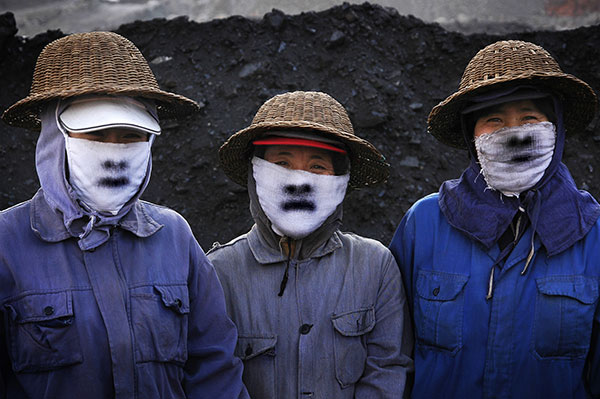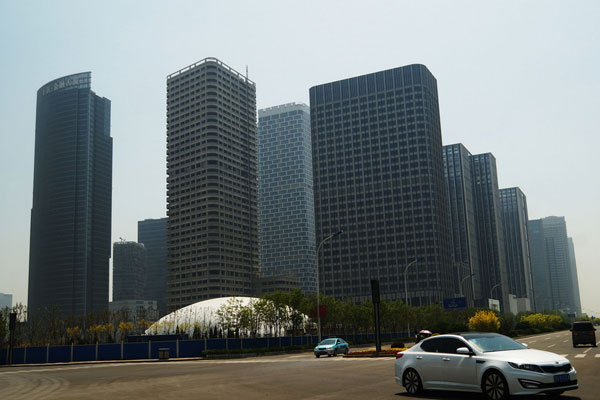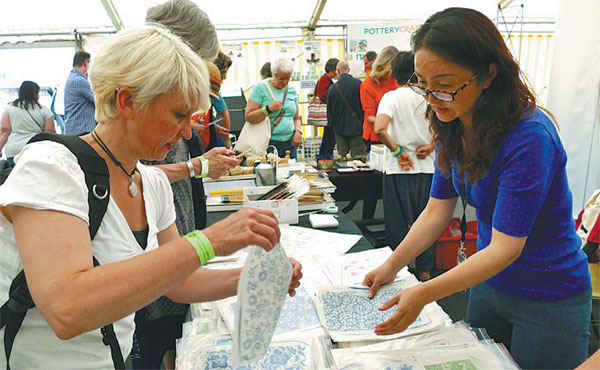Happy potters all fired up about ancient Chinese porcelain
Updated: 2015-08-14 08:53
By Peng Yining(China Daily Europe)
|
|||||||||||
A thick layer of clay dust coats Jessie Lee's work tables and shelves. Her studio abounds with vases and pots, but pride of place goes to a ceramic candlestick decorated with lotus flowers and a Chinese dragon coiled around the neck.
"I've kept it for 40 years. It was my first piece of work," says the 67-year-old Malaysian-born British ceramics artist, speaking at her studio in High Wycombe on the outskirts of London.
"My teacher told me to make something, so I made the dragon candlestick. The Chinese influence was strong when I started to learn about pottery in the 1970s," she says, contemplating the dragon with its piercing claws, surrounded by trailing clouds.
Made from a material that was virtually unknown in Europe until the 1500s, Chinese porcelain caused a sensation in 16th-century Europe, and collecting fine works become popular among the wealthy. By the 18th century the fever had spread to others.
Chinese porcelain, especially the famous blue and white ware, changed people's ideas of beauty, and the enormous demand encouraged European potters to try to replicate art works from the East. The influence of Chinese ceramics continues to inspire artists to this day.
"Chinese porcelain is extremely famous in the West, especially the wares made in Jingdezhen. Almost the entire collection of Chinese porcelain in the British Museum was made in Jingdezhen," Lee says, referring to China's ceramics capital in Jiangxi province. "For British potters, Jingdezhen is the place."
When she visited the ancient city in 2011, Lee was impressed to discover that the ancient pottery-making skills hadn't died out. She saw a man coil a pot simply by walking around the vessel.
"The pot was nearly a meter tall and too big for the wheel, so the man held a lump of clay and moved around at a certain pace so that it looked like he was dancing around the pot," she says. "It was an old way of making pots and was very beautiful. I was inspired and made a smaller coiled pot when I came back."
Last year, Lee returned to Jingdezhen for more inspiration. This time, she cut clay with a stretched coil spring to produce shapes such as waves and ripples.
"The local landscape inspired me. I could hear and see the streams the whole day and the whole night," she says. "Traditional Chinese artists also observe nature and then return to their studios to work."
Today's Top News
Tsipras resigns, asking snap general elections
Preparations shutter Forbidden City, other major tourist spots
Changing face of illegal immigration
President Xi Jinping calls for crews not to ease up
Jon Bon Jovi sings in Mandarin for Chinese Valentine's Day
DPRK deploys more fire units to frontlines with ROK
No cyanide detected from Tianjin river section with fish deaths
Greek PM to resign, seek snap election in September
Hot Topics
Lunar probe , China growth forecasts, Emission rules get tougher, China seen through 'colored lens', International board,
Editor's Picks

|

|

|

|

|

|








